Hands-on Preview: Canon announces new APS-C R50 and full-frame R8 cameras, plus two new kit lenses
posted Wednesday, February 8, 2023 at 12:00 AM EDT
Click here to read our hands-on coverage:
Canon EOS R50 Hands-on Preview
Canon EOS R8 Hands-on Preview
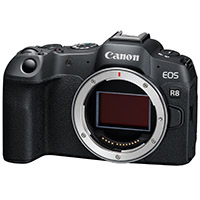
It's a big day for Canon, as the photo industry giant has announced two new cameras and a pair of new kit zoom lenses. The Canon EOS R50 is a new APS-C format entry-level mirrorless camera, targeting a similar audience as Canon's very popular EOS M50 Mark II. For full-frame fans, the new Canon EOS R8 sports the same large 24.2-megapixel sensor and autofocus system as the Canon R6 Mark II at a much lower price of $1,499, perfect for advanced amateurs and budget-conscious enthusiasts. We were fortunate enough to go hands-on with all the new gear last week in beautiful Charleston, South Carolina, so if you want to skip straight to our hands-on previews for the pair of new cameras, click the links above. If you want the quick hits version on all the latest gear, read on.
Canon EOS R50 – A new entry-level option in the EOS R mirrorless system
The R50 joins the existing R10 as an entry-level option for photographers and video creators. At $679.99 body only and with kits starting at $799.99, the R50 is Canon's most affordable EOS R system camera yet. It features the same 24.2-megapixel APS-C sized sensor as R10 and incorporates Canon's excellent Dual Pixel CMOS AF system. The R50 includes AI-powered subject detection autofocus features, including automatic tracking for various subjects, like people, animals and vehicles.
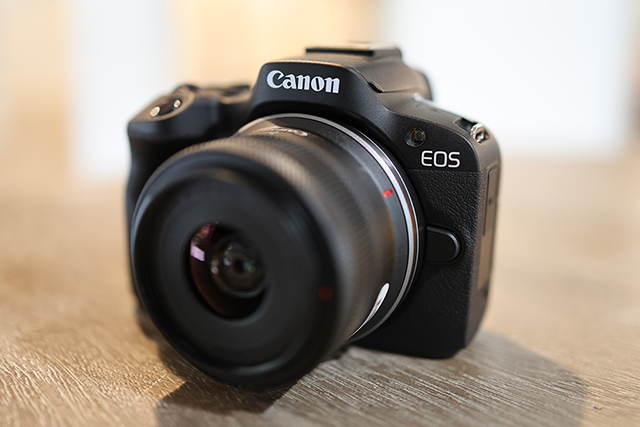
The R50 is compact, even smaller than the already-small R10, but still maintains a tilt-swivel touchscreen and an eye-level viewfinder. The R50, even with its larger RF lens mount, is smaller than the EOS M50 Mark II. While the R50 lacks some of the controls found on enthusiast-level cameras, it doesn't skimp on overall features. The R50 can also record 4K UHD video at up to 30 frames per second, and its impressive autofocus features carry over to video recording. It's also Canon's first APS-C EOS R camera to include uncropped 4K video, which bodes well for wide-angle video recording.
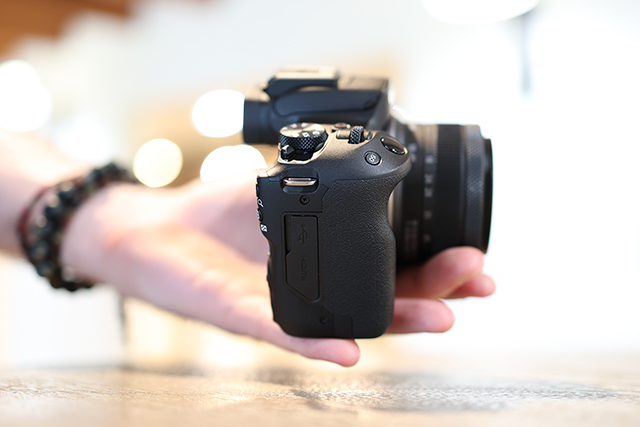
To aid entry-level users, especially those used to working with smartphones, Canon has added a new Advanced A+ mode to the R50. This superpowered assist mode uses different technical features to correct common issues with images, especially in challenging light. For example, in a high-contrast situation, the mode can capture multiple images at once to create a photo with an expanded dynamic range, similar to automatic HDR on a smartphone. The mode can also combine multiple images in a landscape scene to create more depth of field.

There's much more to say about the EOS R50, so head to our Canon R50 Hands-on Preview for many more details and our first impressions of Canon's new entry-level camera. The Canon R50 will hit store shelves this spring. Again, the body only is $679.99. The R50 also comes in two kits, one with the RF-S 18-45mm F4.5-6.3 IS STM lens for $799 and the other with the that lens plus the new RF-S 55-210mm lens for $1,029.
Canon EOS R8 – Full-frame power for $1,500
When Canon launched the R6 Mark II late last year, it introduced a newly developed 24.2-megapixel full-frame image sensor and intelligent AI-powered autofocus system. Both these features make their way into the new R8, which is impressive given that the R8 costs a full $1,000 less than the R6 II.
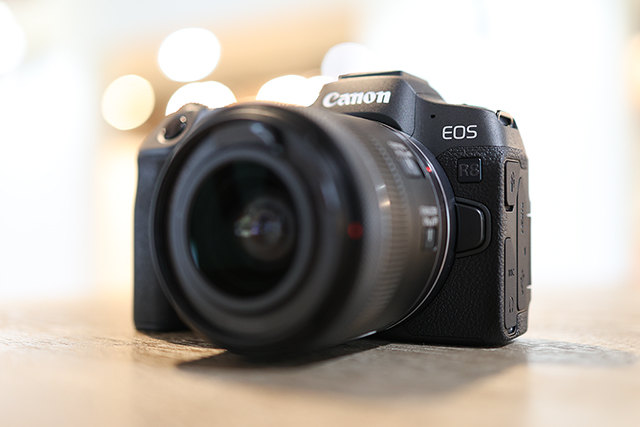
There are some tradeoffs, of course. The R8 has a smaller body, which is nice, but it includes fewer physical controls and lacks an autofocus joystick and in-body image stabilization. The R8 also has a smaller, lower-resolution electronic viewfinder. The R8 can shoot at up to 40 frames per second when using its electronic shutter, with full AF, but it doesn't have the same buffer depths as the R6 II. These compromises make sense but limit the R8's appeal for more advanced users who demand swift controls and high-end continuous shooting performance.
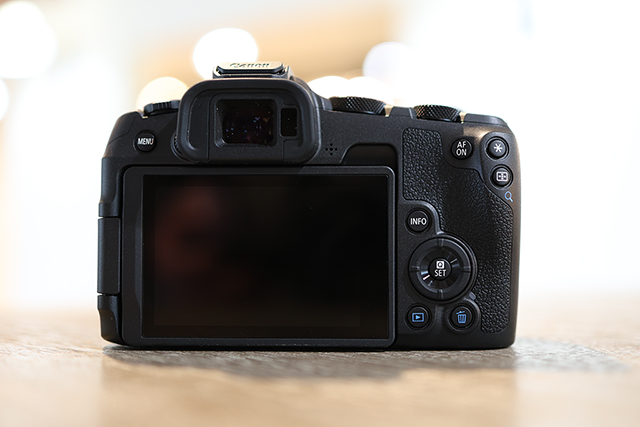
Fortunately, when it comes to the core features, such as the image quality, autofocus performance and video features, the R8 keeps pace with its larger, much pricier sibling. The R8 delivers a lot of performance for the price. During our time in Charleston, we treated the R8 like a travel camera, playing tourist during our short stay in South Carolina. The R8 excelled in this situation, delivering impressive versatility in a compact and budget-friendly package.
For video users, there's a lot to like. The R8 records 4K/60p video using the full width of the sensor, and the 4K video is from oversampled 6K footage. The R8 also includes 10-bit Canon Log 3, HDR PQ, time code, zebra display and more. It's quite an impressive assortment of video features for a camera in its category.

In general, there's much to like about the Canon EOS R8. It's an affordable full-frame camera that doesn't compromise in the most important areas. To read our full thoughts on the Canon R8, head to our Canon EOS R8 Hands-on Preview. The R8 will be available this spring for $1,499 (body only) or in a kit with the new RF 24-50mm F4.5-6.3 IS STM lens for $1,699.
New kit lenses: Canon RF-S 55-210mm F5-7.1 IS STM and RF 24-50mm F4.5-6.3 IS STM
The Canon RF-S 55-210mm F5-7.1 IS STM is a new telephoto zoom lens that will be sold separately and in a kit with the new R50, alongside the typical RF-S 18-45mm F4.5-6.3 IS STM kit lens, for $1,029. The 55-210mm lens delivers an 88-336mm equivalent focal length, well-suited to a wide range of telephoto tasks, like sports and even some wildlife.
The new telephoto lens includes image stabilization, which is nice since the R50 lacks in-body image stabilization. It's also adept at close-up photography, producing 0.28x magnification at 210mm. The lens includes 11 elements across 8 groups and uses Canon's STM focusing drive system. The lens, which weighs 270g (9.5 oz.), is also reasonably compact and lightweight.
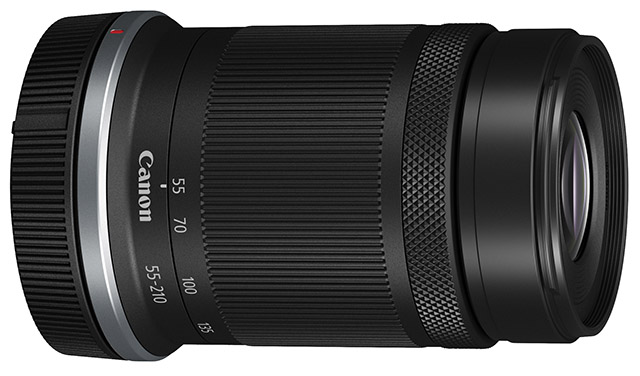
The RF-S 55-210mm lens will also be available separately this spring for $349.99.
The new full-frame kit lens is the RF 24-50mm F4.5-6.3 IS STM. It's a compact kit lens that'll be sold alongside the R8 or separately for $299.99. The RF 24-50mm lens weighs 210g (7.4 oz.) and has a 58mm filter thread. It's just 69mm (3.7 in.) long at its minimum length – it does extend a bit as you zoom.
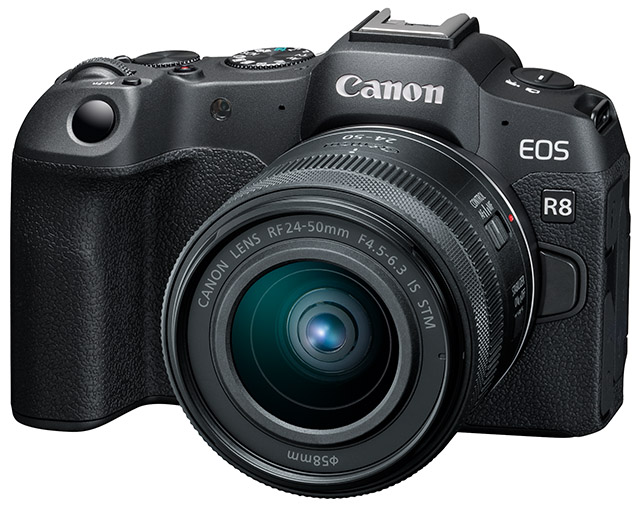
The RF 24-50mm lens includes 8 elements in 8 groups, including a pair of aspherical lens elements. It also includes Canon's Super Spectra Coating (SSC). The lens uses an STM focusing drive and can focus as close as 0.35m (13.8 in.) at 50mm, resulting in a max magnification of 0.19x.
Unlike the RF-S 55-210mm lens we used in Charleston, the new RF 24-50mm was available with production firmware, so we have some gallery shots with the new lens in the R8 Gallery. Be sure to check them out.